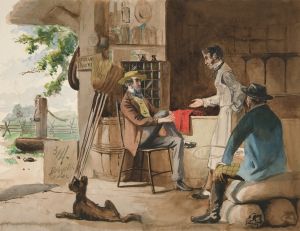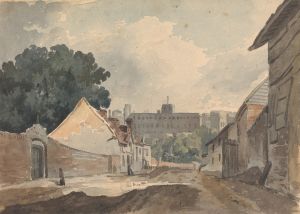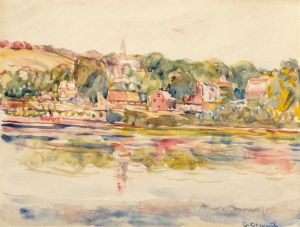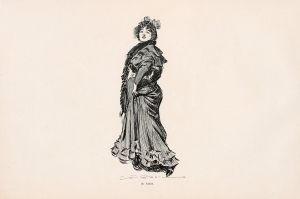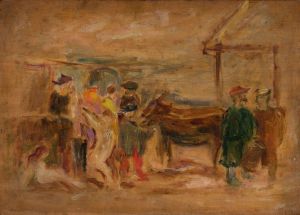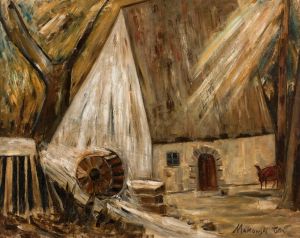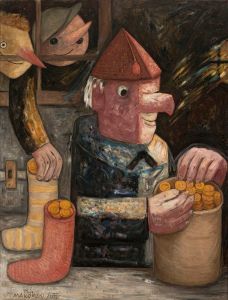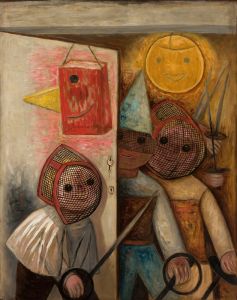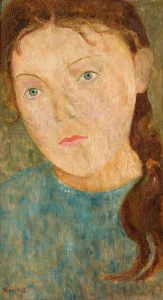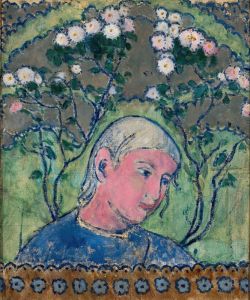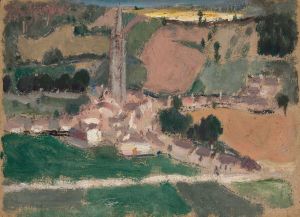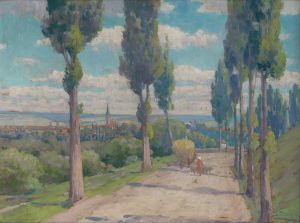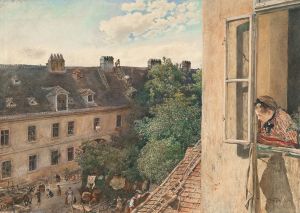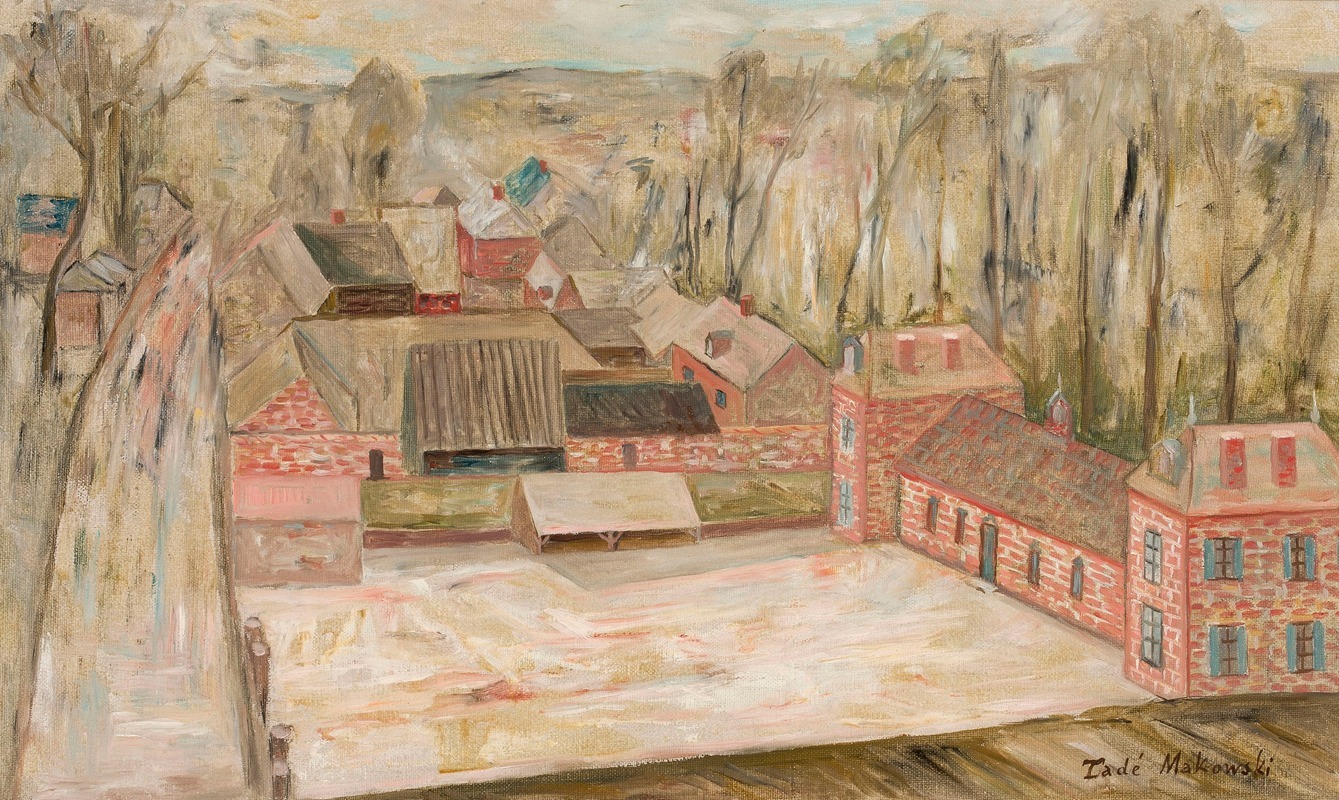
View of a small town
A hand-painted replica of Tadeusz Makowski’s masterpiece View of a small town, meticulously crafted by professional artists to capture the true essence of the original. Each piece is created with museum-quality canvas and rare mineral pigments, carefully painted by experienced artists with delicate brushstrokes and rich, layered colors to perfectly recreate the texture of the original artwork. Unlike machine-printed reproductions, this hand-painted version brings the painting to life, infused with the artist’s emotions and skill in every stroke. Whether for personal collection or home decoration, it instantly elevates the artistic atmosphere of any space.
Tadeusz Makowski was a Polish painter known for his unique style that combined elements of folk art, symbolism, and modernism. Born in 1882 in Oświęcim, Poland, Makowski initially studied classical philology at the Jagiellonian University in Kraków before pursuing his passion for art at the Academy of Fine Arts in Kraków. He later moved to Paris, where he became part of the vibrant artistic community and was influenced by various avant-garde movements.
"View of a Small Town" is one of Makowski's notable works, reflecting his distinctive approach to painting. Although specific details about the creation date and the exact location depicted in the painting are not widely documented, the artwork is characteristic of Makowski's style, which often features simplified forms and a muted color palette. His works frequently depict scenes of everyday life, infused with a sense of nostalgia and innocence.
Makowski's artistic style was heavily influenced by his exposure to the works of Paul Cézanne and the Cubists during his time in Paris. However, he developed a personal style that diverged from strict Cubism, incorporating elements of Polish folk art and medieval woodcuts. This blend of influences is evident in "View of a Small Town," where the geometric simplification of forms and the emphasis on structure and composition are balanced with a warmth and charm reminiscent of folk traditions.
The painting likely portrays a quaint, idyllic townscape, capturing the essence of rural life. Makowski's use of color and form creates a harmonious and serene atmosphere, inviting viewers to appreciate the simplicity and beauty of small-town life. His attention to detail and the careful arrangement of architectural elements reflect his interest in the interplay between human habitation and the natural environment.
Throughout his career, Makowski remained deeply connected to his Polish roots, often drawing inspiration from the landscapes and cultural heritage of his homeland. Despite spending much of his life in France, his work continued to resonate with themes of Polish identity and tradition. This connection is subtly woven into "View of a Small Town," where the universal appeal of the scene is enriched by a sense of place and cultural specificity.
Makowski's contributions to art were recognized during his lifetime, and his works have been exhibited in various galleries and museums. Today, he is remembered as an important figure in Polish art history, whose works continue to be celebrated for their unique blend of modernist innovation and traditional charm. "View of a Small Town" stands as a testament to Makowski's ability to capture the essence of everyday life with sensitivity and artistic insight.





